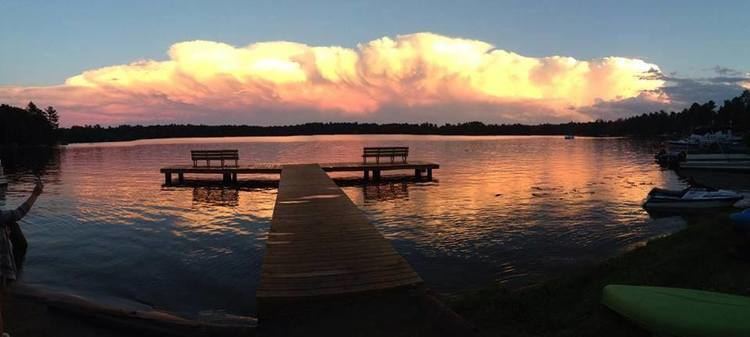Website ironmi.org Founded 3 April 1885 | Area 3,136 km² Population 11,516 (2013) | |
 | ||
Points of interest Ski Brule, Bewabic State Park, Iron County Historical Museum, Harbour House Museum, Chicagon Falls | ||
Iron County is a county in the Upper Peninsula of the U.S. state of Michigan. As of the 2010 census, the population was 11,817. The county seat is Crystal Falls.
Contents
- Map of Iron County MI USA
- History
- Geography
- Major highways
- National protected area
- Demographics
- Government
- Education
- Cities
- Village
- Census designated place
- Townships
- References
Map of Iron County, MI, USA
History
Iron County was organized in 1885 from territory taken from Marquette and Menominee counties. In 1890, the county's population was 4,432. It was named for the valuable iron ore found within its borders.
Geography
According to the U.S. Census Bureau, the county has an area of 1,211 square miles (3,140 km2), of which 1,166 square miles (3,020 km2) is land and 45 square miles (120 km2) (3.7%) is water.
Major highways
National protected area
Demographics
The 2010 United States Census indicates Iron County had a population of 11,817. This is a decrease of 1,321 people from the 2000 United States Census. This is a -10.1% change in population. In 2010 there were 5,577 households and 3,284 families residing in the county. The population density was 10 people per square mile (4/km²). There were 9,197 housing units at an average density of 8 per square mile (3/km²). 97.1% of the population were White, 0.9% Native American, 0.3% Asian, 0.1% Black or African American, 0.2% of some other race and 1.4% of two or more races. 1.4% were Hispanic or Latino (of any race). 14.3% were of German, 11.5% Finnish, 11.3% Italian, 8.6% French, French Canadian or Cajun, 8.0% Swedish, 6.5% English, 5.8% American and 5.4% Irish ancestry.
There were 5,577 households out of which 18.1% had children under the age of 18 living with them, 46.6% were married couples living together, 8.3% had a female householder with no husband present, and 41.1% were non-families. 36.8% of all households were made up of individuals and 19.1% had someone living alone who was 65 years of age or older. The average household size was 2.06 and the average family size was 2.65.
In the county, the population was spread out with 17.1% under the age of 18, 5.4% from 18 to 24, 17.2% from 25 to 44, 34.1% from 45 to 64, and 26.3% who were 65 years of age or older. The median age was 51.9 years. 49.3% of the population was male, 50.7% was female.
The median income for a household in the county was $35,390, and the median income for a family was $46,337. The per capita income for the county was $20,099. About 6.5% of families and 11.7% of the population were below the poverty line, including 18.0% of those under age 18 and 8.8% of those age 65 or over.
Government
The county government operates the jail, maintains rural roads, operates the major local courts, keeps files of deeds and mortgages, maintains vital records, administers public health regulations, and participates with the state in the provision of welfare and other social services. The county board of commissioners controls the budget but has only limited authority to make laws or ordinances. In Michigan, most local government functions — police and fire, building and zoning, tax assessment, street maintenance, etc. — are the responsibility of individual cities and townships.
